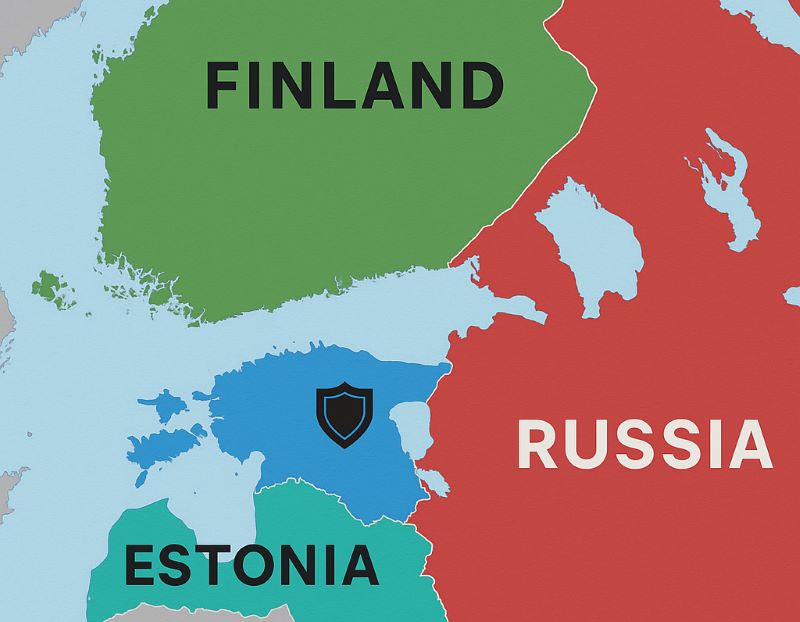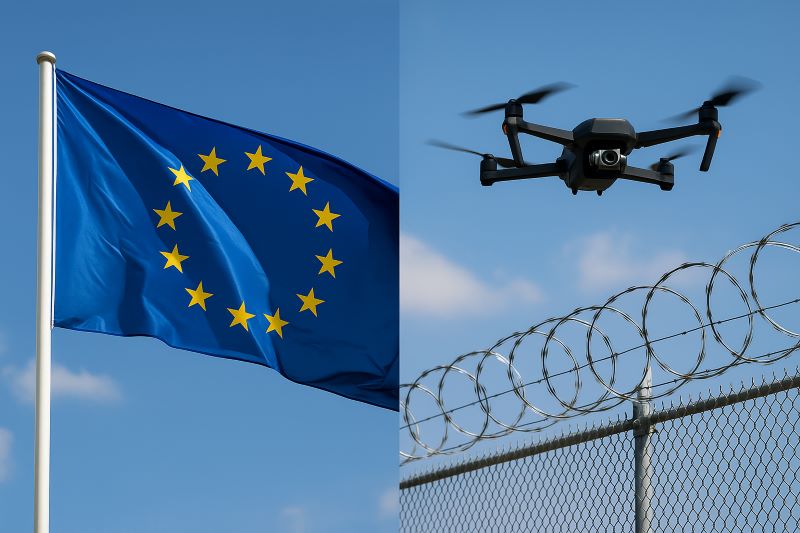In a significant step toward enhancing the European Union’s border security, EU leaders announced this week that they would expedite the construction of a so-called “drone wall” along the bloc’s eastern frontier. The ambitious project, which has been under discussion since 2023, is intended to address rising geopolitical tensions and the growing challenges posed by illegal crossings, smuggling, and hybrid threats. According to the latest news, this project has now moved from the planning phase into early implementation, reflecting a heightened sense of urgency among member states.
According to statements released by the European Commission, the “drone wall” project aims to deploy hundreds of unmanned aerial vehicles along the EU’s external borders, particularly in areas where traditional border patrol infrastructure is insufficient. These drones will be equipped with high-definition cameras, thermal sensors, and advanced communication systems capable of transmitting real-time data to centralized monitoring hubs. The Commission explained that the project is not intended to militarize the borders but to enhance surveillance and provide faster, more reliable intelligence to law enforcement and coast guard authorities.
The initiative has been in planning for several years. Still, the urgency to accelerate its deployment has grown following recent incidents of illegal trafficking in the Baltic Sea region, as well as escalating concerns over hybrid threats, including the weaponization of migration by external actors. In his remarks, Margaritis Schinas, Vice-President of the European Commission, stated: “The European Union faces new and asymmetric threats that require equally innovative solutions. The drone wall is a symbol of our determination to protect our citizens, strengthen our borders, and maintain freedom of movement within the Schengen area.”
While the technical details of the drone deployment remain classified for security reasons, sources familiar with the project indicate that the drones will be operated in both autonomous and remote-controlled modes, capable of continuous flights over stretches of forests, rivers, and coastlines. They will also integrate with existing border technologies such as satellite monitoring systems and biometric checkpoints. Early testing reportedly took place in Estonia and Finland, countries that share extensive borders with Russia and have long advocated for stronger EU surveillance measures.

The announcement has prompted a wave of political debate across the continent. Supporters argue that the drone wall will be a crucial step in safeguarding Europe against illegal activities and maintaining internal stability. Lithuanian Interior Minister Agnė Bilotaitė, whose country has already experimented with drone-assisted patrols, emphasized that the technology could serve as a “force multiplier,” enabling border authorities to cover difficult terrain without escalating military presence. By contrast, critics within the European Parliament and civil society organizations have raised concerns over privacy, civil liberties, and the potential misuse of surveillance data.
According to a recent analysis by the European Council on Foreign Relations, the drone wall reflects a broader trend of European nations investing heavily in artificial intelligence and unmanned systems for public security. Some experts warn that without strong oversight and transparent data governance, the initiative risks reinforcing a “surveillance state” model. “What Europe needs is not only secure borders but also secure rights,” noted a recent commentary from Amnesty International. Questions also remain about who will manage the collected data and how it will be shared across the EU’s member states.
The project’s geopolitical implications are equally significant. Observers believe that the deployment of drones along the EU’s eastern frontier could exacerbate tensions with Moscow, which has previously criticized NATO and EU surveillance measures as provocative. Analysts point out that, while the EU insists the drone wall is strictly a defensive tool, Russia and other neighboring countries may interpret it as a symbolic hardening of Europe’s external borders. The timing of the announcement, coming amid ongoing conflicts in Eastern Europe and heightened transatlantic defense cooperation, has further amplified the project’s political weight.
Financially, the project will be co-funded by the EU’s Internal Security Fund and national budgets, with the first phase expected to cost several hundred million euros. Procurement of drones and related technologies will involve a consortium of European defense and technology companies, ensuring compliance with EU industrial policies while fostering homegrown innovation. Officials confirmed that part of the funding will be directed toward research into AI-driven monitoring software to automatically detect unusual patterns of movement.
Public reaction has been mixed. In southern European states such as Greece and Italy, which face persistent migration challenges, the project has been welcomed as a potential relief measure to overburdened coast guard services. Meanwhile, advocacy groups for asylum seekers argue that the drone wall could contribute to the criminalization of migration, deterring legitimate asylum applications and exacerbating humanitarian crises at Europe’s borders. In Germany, political opposition parties have demanded that the Bundestag conduct a thorough review of how the drone wall aligns with the EU fundamental rights charters.
Despite these controversies, the European Commission insists that it will proceed with the project as planned, aiming for initial operational capability by mid-2026. In the Commission’s vision, the drone wall will serve as a pilot model for integrating unmanned technologies into border management, potentially expanding to cover maritime zones in the Mediterranean if proven successful. By 2030, officials anticipate that nearly all external borders of the Schengen Area could feature drone surveillance as a permanent component of border infrastructure.
The drone wall project comes at a time when Europe is striving to balance its commitment to open internal borders with the necessity of managing external security threats. Analysts suggest that the initiative symbolizes the EU’s attempt to redefine sovereignty in a digital age, where drones, AI, and real-time data analytics increasingly shape how states protect their populations. Whether this approach will enhance Europe’s unity or deepen political divides remains to be seen, but its symbolic significance is already clear: the Union is placing high technology at the heart of its security strategy.













Leave a comment